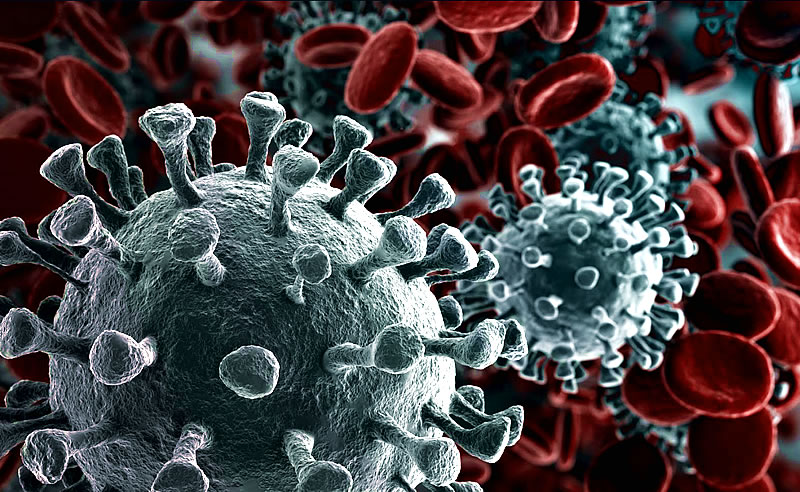On their own, viruses in the environment are no more living
than a bit of dust drifting aimlessly through the air, water, or landing on any
surface. They are not capable of actively seeking out hosts. And while viruses
possess some genetic material, a virus cannot perform genetic replication or
any other life function1 until it comes in contact with and is taken
into a host cell with receptors that match the external chemistry of the virus.
For a respiratory virus to cause disease like COVID-19, it must be activated in a living being and transmitted through a cough, sneeze, handshake or kiss, for example; or from contact with the virus left on a surface. Once the matching cell receptors collide disease can begin, and the newly infected person can transmit the virus to another person, continuing the cycle.
This is where much of the confusion stems from. Once a
chemical match occurs, it is the host cell that goes to work making and releasing
new infected cells to drift into the environment – providing viruses with the
one property of life that makes them seem “alive.” This replication process is
also where variations in viruses occurs, allowing changes in natural selection
in future hosts. It’s also how virus evolution occurs, another property usually
reserved to life forms.
There are arguments that viruses exist on a “continuum of
life,” in a sort of gray area between chemistry and
biology that we have not yet defined. Indeed, this is not as simple as a
game of “Animal, Vegetable, Mineral?” But the point remains that until a virus
is being reproduced by a host cell, it is no more “alive” than the screen you
are reading this on, and at no point is it capable of “seeking out” a host
cell.
When discussing illnesses, it is
important to differentiate viruses from bacterial infections, parasitic
organisms, and other pathogens that affect living beings. Understanding the
differences allows us to ask better questions and to better understand and act
on information provided by health officials.
Another way we treat viruses
differently from plants and animals is in how they are named. Naming of newly
discovered viruses is subject to the rules of the International Code of Virus Classification
and Nomenclature. Unlike plant and animal names, virus names are not required
to be Latinized (Ancylostoma duodenale for hookworms) or binomial (in
two parts). Thus, in viral terminology, most readers understand that the Human
Immunodeficiency Virus (HIV) is the cause of AIDS (acquired immunodeficiency syndrome).
On February 11, 2020, the International Committee on Taxonomy of Viruses
designated “severe acute respiratory syndrome coronavirus 2 (SARS-CoV-2)” as
the name of this new virus that causes COVID-19 (coronavirus disease 19). It is
officially named by the World Health Organization in their International
Classification of Diseases (ICD).
Further information:
1. “Viruses are not living cells. They cannot move,
metabolize, respond, or evolve on their own”
Claude M. Fauquet and John R. Schrock “Classification of Viruses” (Emporia State University) 3.


 .
.










Comments are closed here.